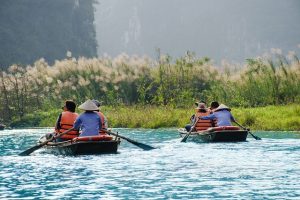Fishing kayaks are specialized watercraft designed for anglers seeking tranquility, challenge, and enhanced fishing experiences. Key features include storage compartments, rod holders, and reclining seats. Their sleek design, hydrodynamic principles, and advanced composite materials enable faster speeds and improved maneuverability. Strategic accessories enhance comfort, organization, and efficiency. Optimizing paddling technique and equipment can make anglers faster and more efficient in their kayak pursuits.
“Unleash your inner speed demon on the water with a streamlined fishing kayak. This specialized watercraft offers a unique blend of agility and stability, catering to enthusiasts seeking efficient movement in their aquatic adventures. We’ll explore the essential design elements that make these kayaks exceptional, from hydrodynamic principles to advanced material choices.
Get ready to discover key features, optimal material selections, and accessories that promise enhanced speed and an unparalleled kayaking experience.”
Understanding the Fishing Kayak: A Unique Watercraft
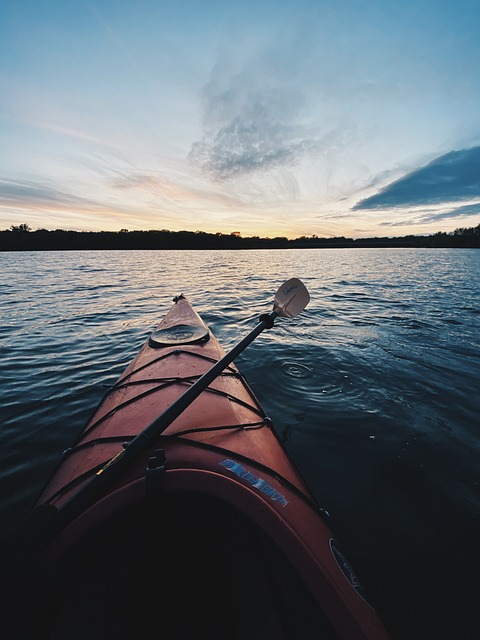
The fishing kayak is a unique watercraft, specifically designed for anglers who enjoy the tranquility and challenge of open waters. Unlike traditional kayaks, which are often focused on recreational paddling, fishing kayaks prioritize storage space and accessorials to enhance the fishing experience. They feature specialized compartments for storing bait, catch, and various fishing gear, making them ideal for extended trips. The design also incorporates features like rod holders, tackle boxes, and even built-in seats that recline, ensuring comfort during hours of waiting for a bite.
These watercraft are highly maneuverable and relatively lightweight, allowing for easy transport on trailers or even in some cases, carried by hand to remote fishing spots. Their low profile and hydrodynamic shape enable them to cut through the water with minimal effort, making them perfect for exploring rivers, lakes, and coastal areas. The versatility of the fishing kayak appeals to both seasoned anglers looking for a more efficient setup and newcomers eager to discover the joys of kayaking while catching their first fish.
The Need for Streamlined Design in Kayaking
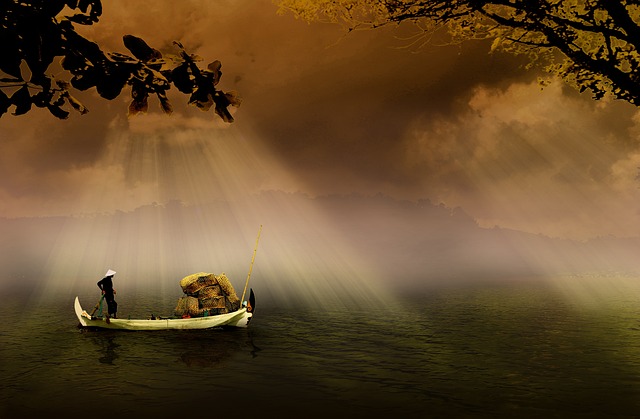
In the world of kayaking, whether for leisure or competitive fishing kayak endeavors, the need for streamlined design cannot be overstated. As kayakers cut through the water, every element of their craft plays a role in efficiency and speed. A well-streamlined kayak reduces drag, enabling faster paddling speeds and greater maneuverability. This is especially crucial for anglers who often cover vast distances in search of the perfect fishing spot, requiring a boat that can keep pace with their active lifestyle.
The design considerations for streamlined kayaking go beyond just aesthetics. From the shape of the hull to the placement of seats and storage compartments, each component should be meticulously engineered to minimize water resistance. This focus on streamlining not only enhances performance but also extends the range and endurance of the kayaker, making it an indispensable aspect for those who enjoy exploring bodies of water in search of both fish and adventure.
Key Features of a Speed-Optimized Kayak
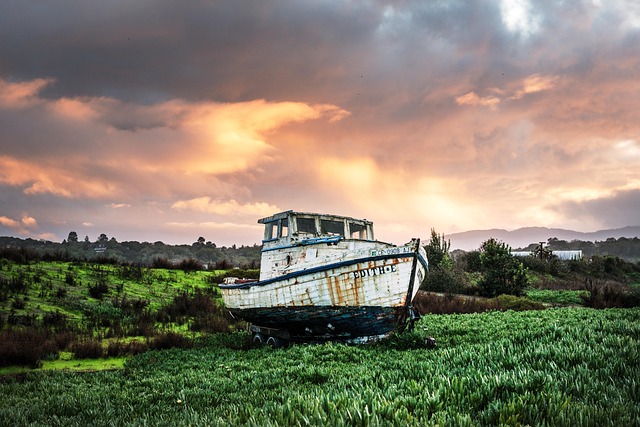
A speed-optimized fishing kayak is designed to cut through the water with efficiency, catering to anglers seeking both performance and convenience. Key features include a hydrodynamic hull shape that reduces drag, allowing for faster acceleration and top speeds. This design, often achieved through advanced construction techniques like composite materials, ensures smooth riding even in choppy waters.
Additional elements contribute to its swiftness. Lightweight yet durable materials minimize the kayak’s overall weight, making it easier to transport and handle. A sleek deck layout with minimal bulk helps maintain low resistance, while integrated skegs provide stability without sacrificing speed. These features translate into quicker casts, more time on the water, and increased opportunities for successful fishing.
Material Choices for Efficient Performance
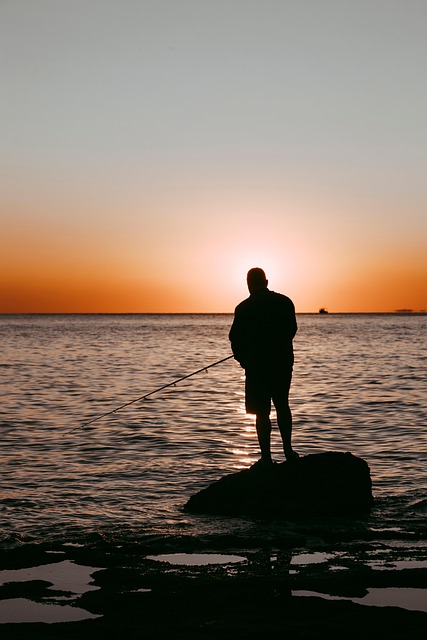
When crafting a fishing kayak, material choices play a pivotal role in determining speed and efficiency. Light-weight composites like carbon fiber and fiberglass are preferred for their incredible strength-to-weight ratio, enabling faster paddling speeds while minimizing fatigue. These materials also reduce overall boat weight, making it easier to maneuver and transport.
In contrast, traditional materials like plastic or wood can be heavier, slowing down the kayak and requiring more effort to paddle. For competitive anglers or those seeking a swift ride, opting for modern composite construction is key to achieving top performance on the water.
Hydrodynamics 101: Enhancing Speed and Stability
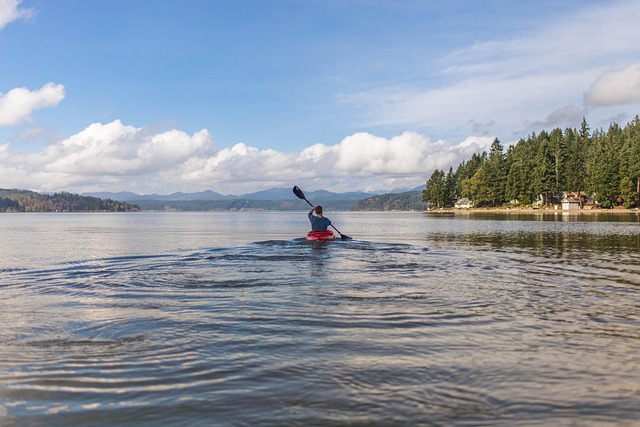
Hydrodynamics plays a crucial role in enhancing the speed and stability of a fishing kayak, making it an essential concept for kayakers to understand. In simple terms, hydrodynamics is the study of water flow and its interaction with objects. When applied to kayaking, it involves optimizing the design and movement of the kayak through water to reduce drag and increase efficiency.
One key aspect is understanding the way water moves around and over the kayak’s surface. By designing a sleek hull shape with curved edges, kayakers can minimize water resistance, allowing for faster and smoother paddling. Additionally, features like a fine-tuned skeg (a rear fin) and adjustable seats help improve stability, enabling kayakers to navigate turns with greater control and confidence, especially at higher speeds.
Accessories to Boost Your Kayaking Experience

Enhance your fishing kayak experience with the right accessories. From adjustable seat backs for enhanced comfort during long hours on the water to storage compartments designed to keep your gear organized and within easy reach, these additions can make all the difference. Consider also investing in a quality paddle that suits your paddling style, ensuring a more efficient and enjoyable journey.
Other useful accessories include navigation tools like GPS devices or compasses for easier tracking of your route, and even fishing rod holders specifically designed to fit kayaks, allowing you to focus on casting while keeping your gear secure. Don’t forget about safety equipment—a well-stocked PFD (Personal Flotation Device) and whistle are essential, especially when venturing into open water.
Tips for Mastering the Art of Speeding Up on the Water

To master the art of speeding up in a fishing kayak, consider these tips. First, optimize your equipment by choosing a lightweight kayak designed for speed and efficiency. Look for models with hydrodynamic shapes that minimize drag, enabling you to cut through the water with ease. Next, focus on your paddling technique. Use a long, fluid stroke with minimal pauses, engaging your whole body for maximum propulsion. Practice regular drills to develop consistency and power in your strokes.
Additionally, maintain a steady pace by monitoring your speed using a GPS or a simple stopwatch. Adjust your paddling intensity accordingly, pushing harder when accelerating and recovering quickly during slower sections. Remember, efficient transitions between strokes and maintaining a low center of gravity will also contribute to increased speed and maneuverability, making you a faster and more effective angler in your fishing kayak.
